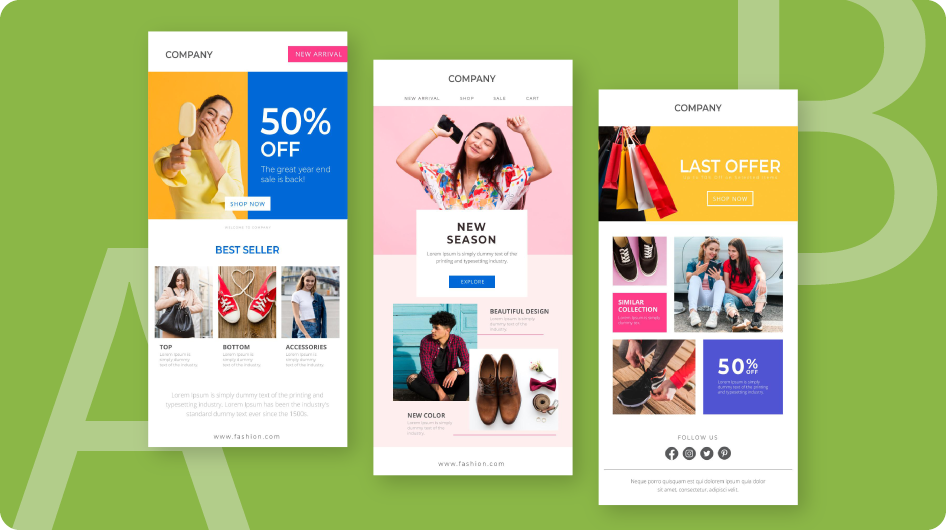In this article, we explore 14 powerful Conversion Rate Optimization (CRO) strategies in 2023, providing businesses with the tools to boost online conversions and drive revenue growth.
Introduction: The Importance of Conversion Rate Optimization in 2023
As businesses continue to shift towards digital platforms, it’s becoming increasingly important to ensure that their online presence is optimized for conversions. Conversion rate optimization (CRO) is the process of improving the percentage of visitors to a website that convert into customers, and it’s an essential component of any successful digital marketing strategy. With the constant evolution of consumer behavior and technology, it’s crucial for businesses to stay up-to-date with the latest CRO strategies in order to maximize their online potential.
In 2023, CRO is more important than ever before. As the world becomes more digitally connected and consumers become more informed, businesses must adapt their marketing techniques to stay competitive. With the rise of e-commerce and the availability of information online, consumers have become more discerning with their purchasing decisions. This means that businesses must work harder to capture their attention and convince them to make a purchase.
One of the biggest advantages of CRO is that it allows businesses to improve their bottom line without increasing their marketing spend. By optimizing their website and improving their conversion rates, businesses can achieve more sales with the same amount of traffic. This means that CRO is a cost-effective way to boost revenue and increase profits.
However, CRO isn’t a one-size-fits-all solution. With so many different factors affecting consumer behavior, it’s important to take a strategic approach to optimization. By understanding the needs and motivations of their target audience, businesses can tailor their CRO efforts to achieve the best possible results. This requires a deep understanding of data analytics, user experience, and consumer psychology.

An illustration of a funnel depicting the conversion process
1. Targeted Personalization: How Can it Drive Conversions?
Personalization is a powerful tool for driving conversions. By tailoring their website content and messaging to the unique needs and preferences of each individual visitor, businesses can create a more engaging and relevant user experience. This can lead to increased engagement, loyalty, and ultimately, more sales.
One effective way to personalize a website is by using dynamic content. This involves changing the content of a webpage based on the visitor’s behavior, preferences, or location. For example, an e-commerce website might show different product recommendations to different visitors based on their purchase history or browsing behavior. This can increase the likelihood that a visitor will find something they’re interested in and make a purchase.
Another way to personalize a website is by using targeted messaging. This involves tailoring the language and tone of a website’s copy to the visitor’s demographic, location, or behavior. For example, a travel website might use language and imagery that’s specific to a certain region or country to appeal to visitors from that area. This can create a more personalized and engaging experience for the visitor, which can increase the likelihood that they’ll take the desired action.
Personalization can also be used to improve the user experience of a website. By making it easier for visitors to find what they’re looking for, businesses can reduce frustration and increase engagement. For example, a website might use a visitor’s location to automatically show them the nearest store or location. This can make it more convenient for the visitor to find what they’re looking for, which can increase the likelihood that they’ll make a purchase.
2. A/B Testing: What Makes This Technique Essential?
A/B testing, also known as split testing, is an essential technique for optimizing conversion rates. By testing different variations of a website or landing page, businesses can determine which version performs better in terms of achieving their desired goals. This can involve testing different headlines, images, calls-to-action, or other elements of the page.
One of the key benefits of A/B testing is that it allows businesses to make data-driven decisions about their website or landing page. Instead of relying on guesswork or intuition, A/B testing provides concrete evidence about what works and what doesn’t. This can help businesses make informed decisions about how to optimize their website for maximum conversions.
Another benefit of A/B testing is that it can help businesses identify areas for improvement. By testing different variations of a page, businesses can identify which elements are underperforming and need to be revised. This can help businesses make incremental improvements over time, leading to a more effective and efficient website or landing page.
A/B testing can also help businesses identify which traffic sources are most valuable. By testing different variations of a page for different traffic sources, businesses can determine which sources are driving the most conversions. This can help businesses allocate their marketing budget more effectively, focusing on the sources that are most likely to generate results.
Finally, A/B testing can help businesses stay competitive in a constantly evolving digital landscape. By testing different variations of their website or landing page, businesses can stay ahead of the curve and keep up with changing consumer behavior. This can help businesses maintain a competitive edge, leading to increased traffic, engagement, and ultimately, more conversions.

A split-screen image showing two different web design layouts
3. “Speed Matters”: The Impact of Website Performance on CRO
In today’s fast-paced digital world, website speed is more important than ever. Website performance can have a significant impact on conversion rates, with slow-loading pages often leading to high bounce rates and lost sales. Research has shown that even a one-second delay in page load time can result in a 7% decrease in conversions. This means that ensuring website speed is a crucial component of any successful CRO strategy.
There are several ways to improve website performance, including optimizing images, reducing file sizes, and using a content delivery network (CDN). By optimizing images and reducing file sizes, businesses can decrease the amount of time it takes for a page to load. A CDN can also help improve website speed by caching content and delivering it to users from a server that is geographically closer to them.
In addition to impacting conversion rates, website speed can also affect search engine rankings. Google has stated that website speed is a ranking factor, with faster-loading pages generally ranking higher in search results than slower-loading pages. This means that improving website speed can not only lead to increased conversions, but also increased visibility in search engines.
Mobile optimization is also critical for improving website speed and CRO. With more and more consumers accessing websites on their mobile devices, it is essential that businesses ensure their website is optimized for mobile. This includes using responsive design, optimizing images for mobile, and minimizing the use of large files or plugins that can slow down page load times.
4. Mobile Optimization: Are You Meeting Your Customers’ Needs?
Mobile optimization is essential for any business looking to improve their conversion rates. With more and more consumers using their mobile devices to browse and shop online, it’s crucial that businesses ensure their website is optimized for mobile. This includes using responsive design, optimizing images for mobile, and minimizing the use of large files or plugins that can slow down page load times.
One important aspect of mobile optimization is ensuring that the website is easy to navigate on a smaller screen. This means using larger font sizes, clear and concise headings, and avoiding cluttered layouts. Customers should be able to easily find what they’re looking for and complete their desired actions, such as making a purchase or filling out a form.
Another key component of mobile optimization is ensuring that the website is fast and responsive. Customers expect websites to load quickly on their mobile devices, and any delays or slow loading times can lead to frustration and lost sales. By optimizing images and reducing file sizes, businesses can improve website speed and provide a better user experience for their customers.
Mobile optimization also includes ensuring that the website is compatible with a range of different devices and screen sizes. With so many different types of mobile devices on the market, it’s crucial that businesses test their website on a variety of devices to ensure that it looks and performs well across the board.
In addition to improving conversion rates, mobile optimization can also have a positive impact on search engine rankings. Google has stated that mobile-friendliness is a ranking factor, with mobile-optimized websites generally ranking higher in search results than non-optimized sites. This means that businesses that invest in mobile optimization can not only improve their conversion rates but also increase their visibility in search engines.

A mobile device displaying a user-friendly and responsive web design
5. The Power of Social Proof: How Does it Influence Decision-Making?
Social proof is a powerful tool that businesses can use to improve their conversion rates in 2023. Social proof refers to the influence that the actions and opinions of others have on our own behavior. In other words, when we see that other people have made a certain decision or taken a certain action, we are more likely to follow suit.
One of the most common forms of social proof is customer reviews and testimonials. By displaying positive reviews and testimonials on their website, businesses can demonstrate to potential customers that their products or services are high-quality and worth purchasing. This can help build trust and credibility with customers, and ultimately lead to increased conversion rates.
Another form of social proof is social media likes, comments, and shares. When customers see that a business’s social media posts are being liked and shared by others, they are more likely to engage with the business and consider making a purchase. This is because social media activity can serve as a form of validation, indicating that the business is reputable and trustworthy.
Celebrity endorsements are another form of social proof that can be effective in driving conversions. When a celebrity endorses a product or service, their fans and followers are more likely to take notice and consider making a purchase. This is because celebrities are often seen as influential and trustworthy figures, and their endorsement can serve as a form of validation for the product or service.
Conclusion: Maximizing Your CRO Potential in 2023
In conclusion, conversion rate optimization will continue to be a critical aspect of digital marketing in 2023. With the ever-increasing competition in the online marketplace, businesses must ensure that they are using the most effective CRO strategies to drive conversions and increase revenue. This includes tactics such as targeted personalization, A/B testing, website performance optimization, mobile optimization, and social proof.
To maximize their CRO potential in 2023, businesses should prioritize their customers’ needs and preferences, constantly testing and refining their website and marketing strategies to improve user experience and increase conversions. They should also stay up-to-date with the latest trends and technologies, such as AI and machine learning, to ensure that they are using the most cutting-edge and effective CRO tactics.
Furthermore, businesses should not overlook the importance of data analysis and measurement in their CRO efforts. By tracking and analyzing key metrics such as conversion rates, bounce rates, and customer behavior, businesses can identify areas for improvement and optimize their website and marketing strategies accordingly.

A rising graph representing improved conversion rates in 2023
Implementing these 14 CRO strategies will help businesses effectively optimize their conversion rates, resulting in increased profitability and customer satisfaction in 2023.






